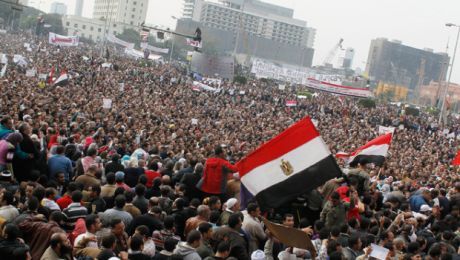Features
You are here
United against oppression

April 20, 2012
Mohamed Boazizi set himself on fire in front of a local municipal office in the central town of Sidi Bouzid in Tunisia. After a series of protests all over Tunisia in December 2010, dictator Ben Ali fled to Saudi Arabia. The Saudi government welcomed him not realizing that the Tunisian revolution would spread to other Arab countries as well including Saudi Arabia. The end of Ben Ali’s rule inspired Arabs, and later people around the world to rise against oppression, repression, dictatorship and even austerity.
The “Jasmine Revolution” was not the only force that ousted Ben Ali: behind the scene workers, students, and the unemployed have been protesting and going on strikes for the past few years.
In 2008, unemployment triggered a huge protest in the mining area of Gafsa where unemployment was 30 per cent. Workers and students in the area were mobilized and found their way to the streets demanding an end to the unemployment problem, better education and health services. Teachers joined the protests too and a mass worker strike happened in the area. Ben Ali’s forces brutally attacked protesters and workers. Resistance didn’t end, but went underground. Two years later, workers, students and unemployed youths united together demanding “the fall of the regime.” When the Tunisian trade union federation called a general strike, Ben Ali was ousted.
Inspired by the Tunisian revolution, Egyptians gathered in Tahrir demanding the fall of the regime. On February 9 mass strikes spread across the country including in Suez, and on February 11 Mubarak resigned to hand power to the Egyptian army.
Similarly, Egyptians have been building for their revolution during successive years of strikes and protests. Waves of workers’ strikes weakened the regime. For instance, workers in Mahalla have gone on strike several times since 2007, encouraging others. In January 2009, 900 workers in Nile Cotton Factory in Mahalla went on strike. Thousands of pharmacists, doctors, nurses, teachers, students, railway workers, etc. all joined the strikes in different Egyptian cities. Some of these strikes led to independent trade unions, which have continued to emerge since the fall of Mubarak.
While protestors gathered in Tahrir in January 2011, others have been going on mass strikes in several work sectors including factories. After more than a year since the revolution began, Egyptians are still going on strike and protesting for better economic conditions, democracy and an end to the existing military rule.
In other Arab countries like Bahrain and Jordan, workers, students and unemployed graduates have been protesting against deteriorating economic conditions, dictatorship and oppression. Many workers and students were dismissed from work and universities, while others have been arrested and brutally tortured. Despite the crackdown, workers and students remain united against oppressive regimes.
Section:
Topics:
- Log in to post comments










